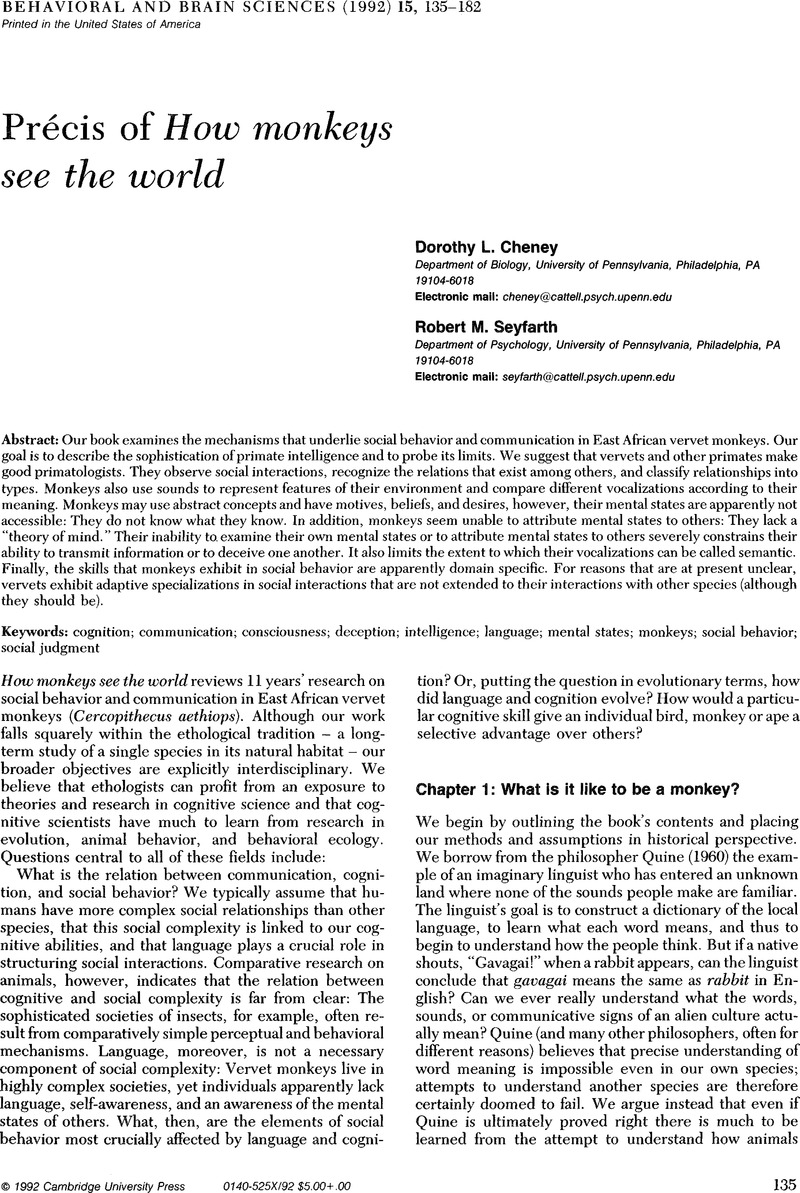Crossref Citations
This article has been cited by the following publications. This list is generated based on data provided by Crossref.
Visalberghi, E
and
Tomasello, M
1998.
Primate causal understanding in the physical and psychological domains.
Behavioural Processes,
Vol. 42,
Issue. 2-3,
p.
189.



